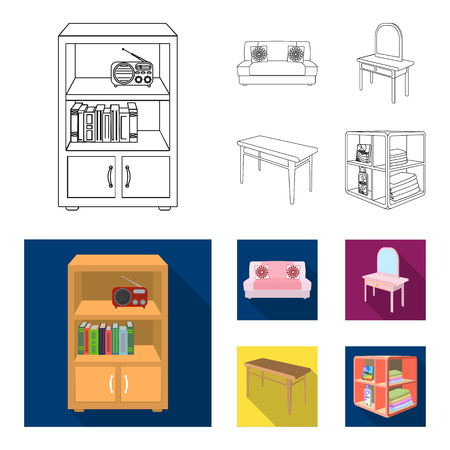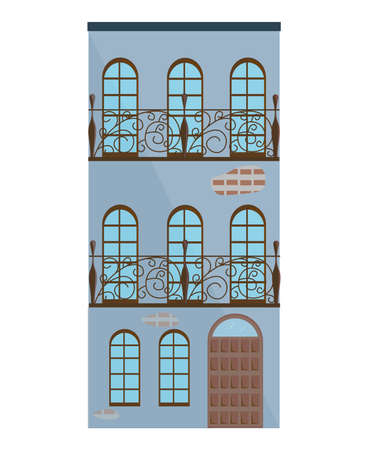Introduction: Maximising Space in Classic Terraced Homes
Terraced houses, a staple of British architectural heritage, line countless streets across the UK. While their historic charm and sense of community are undeniable, these classic homes often come with spatial limitations that challenge modern living standards. Narrow footprints, compact rooms, and limited storage can leave residents yearning for extra space without sacrificing the unique character of their property. This is where creative loft and attic conversions step in as ingenious solutions. By transforming underutilised upper spaces, homeowners can unlock additional living areas—be it a serene bedroom retreat, a bright home office, or an imaginative playroom—while retaining the quintessential features of their period homes. With thoughtful design and an eye for aesthetics, loft and attic conversions offer both practical benefits and opportunities for beautiful, bespoke interiors tailored to contemporary lifestyles.
2. Understanding Loft and Attic Spaces in UK Terraced Houses
Victorian and Edwardian terraced homes form a distinctive backdrop across the UK’s urban landscape, celebrated for their period charm and compact footprints. When considering creative loft or attic conversions to unlock additional living space, it is vital to first appreciate the architectural features unique to these properties and recognise both opportunities and restrictions inherent in their original design.
Key Architectural Features of Victorian & Edwardian Rooftops
| Feature | Description | Impact on Conversion |
|---|---|---|
| Pitched Roofs | Steeply sloped, often with slate tiles. | Offers potential for headroom but may limit usable floor area unless dormers are added. |
| Low Eaves Height | Eaves frequently start at a lower height due to roof pitch. | Can restrict standing space; solutions include raising the roof or installing dormer windows. |
| Chimney Stacks | Commonly shared between neighbouring properties. | May limit layout options, requiring careful planning to avoid structural issues. |
| Narrow Footprints | Homes are typically long and narrow. | Makes space planning critical to ensure practical layouts and light distribution. |
| Tiled or Slate Roofing Materials | Traditional coverings, sometimes requiring replacement or reinforcement. | Insulation and waterproofing upgrades may be needed during conversion. |
Typical Limitations to Consider Before Converting
- Structural Integrity: Older timbers may need strengthening to support new loads from converted spaces.
- Access: Space for a staircase must be found within already limited floorplans, ideally without sacrificing key rooms below.
- Head Height: Building regulations require minimum headroom (usually 2 metres) over most of the new floor area—essential for comfortable use as a bedroom or living space.
- Natural Light: Original attics often lack windows; adding skylights or dormers is usually necessary for brightness and ventilation.
- Planning Permissions: Some alterations, especially involving rooflines visible from the street, may require formal planning consent from local authorities in the UK.
Assessing Suitability for Conversion: A Step-by-Step Approach
- Measure Headroom: Check the highest point from floor to ridge—ideally 2.2m or more before works begin.
- Review Roof Structure: Identify if your property has traditional cut rafters (easier to convert) or trussed roofs (require more structural work).
- Survey for Obstacles: Look out for water tanks, chimney breasts, or historic features that may need repositioning or preservation.
- Liaise with Neighbours: In terraced rows, party wall agreements may be necessary before construction begins.
- Consult Professionals: Engage an architect or structural engineer familiar with period properties to ensure plans meet both aesthetic ambitions and safety regulations.
The Balance of Character and Innovation
A successful loft or attic conversion in a small terraced home celebrates the building’s history while introducing modern comfort. By understanding these fundamental characteristics and challenges, you can design imaginative solutions that maximise every inch—transforming unused rooftops into beautiful, functional extensions of your living space.

3. Creative Design Ideas for Attic and Loft Conversions
Unlocking the true potential of your terraced homes loft or attic is all about creative vision paired with practical solutions. Whether you dream of a sunlit bedroom, an inspiring home office, or a tranquil retreat away from the bustle of daily life, small spaces can be transformed into something truly special with thoughtful design choices.
Bringing in Natural Light
Maximising daylight is key in British attics, where natural light can often be limited. Consider installing roof windows, such as Velux or conservation-style skylights, to flood the space with sunlight while maintaining the character of your period property. Dormer windows are another popular option in the UK, especially for adding headroom and architectural interest to Victorian or Edwardian terraces.
Bespoke Storage Solutions
Clever storage is essential in compact conversions. Built-in wardrobes under sloping eaves make use of every inch, while custom shelving provides a place for books, keepsakes, or even houseplants that thrive in well-lit nooks. For those working from home, tailor-made desks or storage benches can be designed to fit awkward corners perfectly, keeping clutter at bay and maximising floor space.
Personalised Touches for Stylish Living
The joy of a loft conversion lies in creating a space that reflects your personality. Soft textures, layered lighting schemes, and a calming colour palette make attic bedrooms feel inviting and restful. For a home office, consider statement wallpaper or exposed brick to add visual interest. And if relaxation is your goal, think about cosy window seats or reading alcoves overlooking leafy London streets or quaint village rooftops—true sanctuary above the city’s hum.
4. Navigating Planning Permissions and Building Regulations
When transforming your loft or attic in a small terraced home, understanding the intricacies of UK planning permissions and building regulations is essential. These measures are designed not only to protect the character of local neighbourhoods but also to ensure safety and structural integrity within your home.
Planning Permission: Do You Need It?
For most loft conversions in England, planning permission is not required if the works fall under Permitted Development Rights. However, there are exceptions—especially for homes in conservation areas or with previous extensions. Here’s a quick overview:
| Criteria | Permitted Development? |
|---|---|
| Volume increase up to 40m³ (terraced houses) | Yes |
| Extension beyond existing roof slope (front elevation) | No |
| Materials similar to existing house | Yes |
| Balconies or raised platforms added | No |
| Property located in conservation area/listed building | No (application required) |
If your project does require planning permission, it’s wise to consult your local council early in the design process to avoid costly setbacks.
The Party Wall Agreement: Keeping Good Neighbours
Terraced homes almost always share walls, so the Party Wall Act 1996 comes into play. If your conversion involves work on shared structures—such as raising party walls or inserting steel beams—you must notify adjoining owners with a formal notice. Ideally, come to an agreement in writing to prevent disputes; if not, appointing a surveyor may be necessary.
Steps for Party Wall Compliance:
- Serve written notice at least two months before work begins.
- If neighbours agree, sign a Party Wall Agreement.
- If there are concerns, appoint a surveyor to draw up an ‘Award’ that sets out how works will proceed.
Building Regulations: Safety First
No matter the scale, all loft and attic conversions must comply with current Building Regulations. Key focus areas include:
- Structural Stability: Reinforcement of joists and load-bearing elements.
- Fire Safety: Installation of fire doors, smoke alarms, and safe escape routes.
- Insulation & Ventilation: Proper insulation for energy efficiency; adequate airflow to prevent damp and mould.
- Staircase Access: Safe and permanent access via compliant stairs.
- Windows: Sufficient natural light and means of escape in case of emergency.
Your local authority’s Building Control team will inspect works at various stages. Upon completion, you’ll receive a completion certificate—a vital document for future sales or remortgaging.
Summary Table: Key Regulatory Steps
| Stage | Description |
|---|---|
| Initial Design & Consultation | Liaise with architect/builder; check planning requirements. |
| Party Wall Notices Served | Notify neighbours if shared walls are involved. |
| Building Control Approval Sought | Submit plans for regulatory review. |
| Regular Inspections During Build | Council officials verify compliance at key milestones. |
| Completion Certificate Issued | Evidences that all works meet UK standards. |
This practical approach ensures your creative loft or attic conversion is both inspiring and fully compliant—allowing you to enjoy your new space with complete peace of mind.
5. Incorporating British Heritage with Contemporary Flair
One of the most rewarding aspects of converting lofts and attics in small terraced homes is the opportunity to celebrate British heritage while embracing contemporary living. Here are some expert tips to help you honour original period features, seamlessly blending them with modern design elements, carefully curated colour palettes, and eco-friendly innovations:
Respecting Period Details
Begin by identifying characterful features worth preserving: exposed brickwork, original beams, ornate cornices, or classic sash windows. Retain these authentic details wherever possible—they tell the story of your home and add irreplaceable charm. Carefully restore what’s salvageable using traditional techniques or sympathetic materials to keep the space true to its roots.
Modernising with Subtlety
To achieve a balanced look, introduce contemporary fittings that quietly complement heritage elements rather than overpowering them. Think streamlined built-in storage in muted tones, minimalist lighting solutions, or sleek metal finishes that echo period ironmongery. The key is to let old and new harmonise, creating a timeless yet relevant atmosphere.
Curated Colour Palettes
Opt for colour schemes inspired by British interiors—muted greens, deep blues, warm greys, and soft creams evoke a sense of understated elegance. Accentuate period woodwork or plasterwork with subtle contrasts; for example, pairing off-white walls with darker trims can highlight architectural details while keeping the space feeling light and airy.
Sustainable Touches
Incorporate eco-friendly materials and practices as a nod to both tradition and modern sensibility. Reclaimed timber flooring, wool insulation, or energy-efficient roof windows blend practicality with sustainability. Choose paints low in VOCs and natural textiles for soft furnishings—these choices enhance comfort while reducing environmental impact.
Tip:
When combining old and new, less is often more. Allow original features to take centre stage and use contemporary touches as supporting accents. This approach ensures your converted loft or attic feels both distinctly British and refreshingly up-to-date—a true celebration of past and present under one roof.
6. Cost Considerations and Value Added
When contemplating a creative loft or attic conversion in a small terraced home, it’s essential to approach budgeting with both clarity and foresight. While such projects are renowned for transforming underutilised spaces into stylish living areas, understanding the full scope of costs is key to ensuring your investment pays off in the long term.
Budgeting for Your Conversion
The initial outlay for a loft or attic conversion in the UK typically ranges from £20,000 to £50,000, depending on the complexity of design, quality of finishes, and structural alterations required. Basic room-in-roof conversions are usually more affordable, whereas dormer or mansard conversions—often necessary for small terraced houses—command higher costs due to increased labour and materials. It’s wise to set aside a contingency fund of 10-15% above quoted estimates to account for unexpected changes or upgrades during construction.
Potential Hidden Costs
Beyond headline figures, homeowners should be aware of potential hidden expenses. These may include planning permission fees (if your scheme falls outside permitted development rights), building regulation approvals, party wall agreements with neighbours, and unforeseen structural reinforcements. Additionally, upgrading insulation, fire safety measures, or improving access with new staircases can add to the overall spend. Engaging an experienced architect or builder familiar with period properties common in the UK can help preempt these surprises.
Maximising Value in the UK Market
A well-executed loft or attic conversion can significantly boost both liveability and market value. In many British cities and towns, adding an extra bedroom and bathroom via a conversion can increase property value by as much as 20%. Buyers are increasingly drawn to homes that make inventive use of space—particularly in sought-after neighbourhoods where square footage is at a premium. To maximise return on investment, prioritise high-quality workmanship, thoughtful design that complements your home’s existing character, and compliance with all relevant regulations.
Ultimately, while creative conversions require careful financial planning, they offer one of the most effective ways to enhance both lifestyle and property worth within the unique context of Britain’s terraced housing stock.


